Introduction to Molecular Dynamics with GROMACS
Introduction to Molecular Dynamics with GROMACS
Introduction to Molecular Dynamics with GROMACS
Create successful ePaper yourself
Turn your PDF publications into a flip-book with our unique Google optimized e-Paper software.
You don’t have <strong>to</strong> do exactly these analyses, but try one or a couple of them that sound interestingand then use the documentation website or Google <strong>to</strong> see what else you can do if you prefer that. Atleast for the longer ones you will get clearer results <strong>with</strong> a longer trajec<strong>to</strong>ry.Deviation from X-ray structureOne of the most important fundamental properties <strong>to</strong> analyze is whether the protein is stable andclose <strong>to</strong> the experimental structure. The standard way <strong>to</strong> measure this is the root-mean-square displacement(RMSD) of all heavy a<strong>to</strong>ms <strong>with</strong> respect <strong>to</strong> the X-ray structure. <strong>GROMACS</strong> has a finished program<strong>to</strong> do this, called g_rms that takes a run input file and a trajec<strong>to</strong>ry <strong>to</strong> produce RMSD output.It is usually a good idea <strong>to</strong> use a reference structure (the tpr file) from the input before energy minimization,since that is the experimental one. The program will prompt both for a fit group, and thegroup <strong>to</strong> calculate RMSD for – choose “Protein-H” (protein except hydrogens) for both. The outputwill be written <strong>to</strong> rmsd.xvg, and if you installed the Grace program you will directly get a finished graphthat you can display <strong>with</strong> xmgrace rmsd.xvg.The RMSD increases pretty rapidly in the first part of the simulation, but stabilizes around 0.l9 nm,roughly the resolution of the X-ray structure. The difference is partly caused by limitations in the forcefield, but also because a<strong>to</strong>ms in the simulation are moving and vibrating around an equilibrium structure.A better measure can be obtained by first creating a running average structure from the simulationand comparing the running average <strong>to</strong> the X-ray structure, which would give a more realistic RMSDaround 0.16 nm.Comparing fluctuations <strong>with</strong> temperature fac<strong>to</strong>rsVibrations around the equilibrium are not random, but depend on local structure flexibility. Theroot-mean-square-fluctuation (RMSF) of each residue is straightforward <strong>to</strong> calculate over the trajec<strong>to</strong>ry,but more important they can be converted <strong>to</strong> temperature fac<strong>to</strong>rs that are also present for each a<strong>to</strong>m in aPDB file. Once again there is a program that will do the entire job - g_rmsf. The output can be written<strong>to</strong> an xvg file you can view <strong>with</strong> xmgrace, but also as temperature fac<strong>to</strong>rs directly in a PDB file(check the output file options for the program). When prompted, you can use the group “C-alpha” <strong>to</strong>get one value per residue. The overall agreement should be quite good (check the temperature fac<strong>to</strong>rfield in this and the input PDB file), which hopefully lends further credibility <strong>to</strong> the accuracy and stabilityof the simulation - your fluctuations are similar <strong>to</strong> those seen in the X-ray experiment.Secondary structure (Requires DSSP)Another measure of stability is the protein secondary structure. This can be calculated for each frame<strong>with</strong> a program such as DSSP. If the DSSP program is installed and the environment variable DSSPpoints <strong>to</strong> the binary (do_dssp -h will give you help on that), the <strong>GROMACS</strong> program do_dsspcan create time-resolved secondary structure plots. Since the program writes output in a special xpm (Xpixmap) format you probably also need the <strong>GROMACS</strong> program xpm2ps <strong>to</strong> convert it <strong>to</strong> postscript.Both commands are reasonably well documented, and the end result will be an eps file that you canview e.g. <strong>with</strong> ghostview or some other standard previewer application.Use the group “protein” for the secondary structure calculation. The DSSP secondary structure definitionis pretty tight, so it is quite normal for residues <strong>to</strong> fluctuate around the well-defined state, in particularat the ends of helices or sheets. For a (long) protein folding simulation, a DSSP plot would showhow the secondary structures form during the simulation. If you do not have DSSP installed, you cancompile the Gromacs built-in replacement “my_dssp” from the src/contrib direc<strong>to</strong>ry, or hope thatyour system administra<strong>to</strong>r already did so for you.



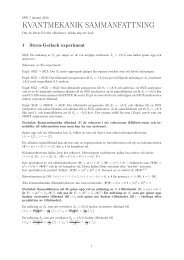

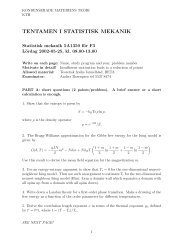
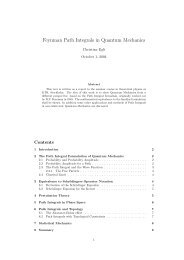
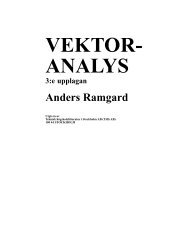
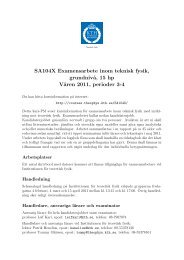

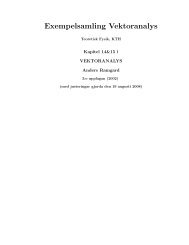

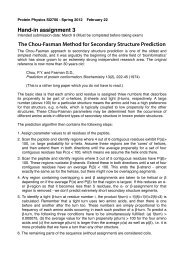

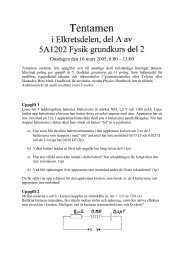
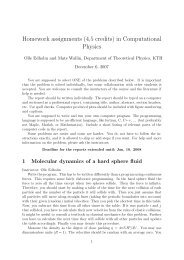
![[VAR]=Notes on variational calculus](https://img.yumpu.com/35639168/1/190x245/varnotes-on-variational-calculus.jpg?quality=85)